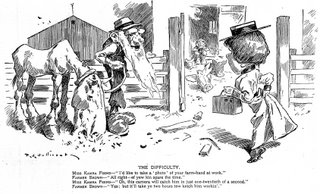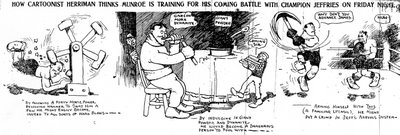A Washington Lobbyist Hawking His Wares?

This is an example of Sullivant's political cartooning, published in 1904. Most of the political cartoons I've seen by Sullivant seem pretty general and easy to understand (even 100 years later). But I wonder if that lack of specificity made them less powerful to the readers of the time. Maybe that's why he isn't really remembered for his political cartooning. Of course, the volume of political cartoons he produced is tiny in comparison to his humor cartoons. I can only confirm 1904 and 1905 as years when he drew political cartoons for Hearst's New York American. He also worked for Hearst in the late 1890s at the New York Journal, but I haven't seen much from that period.








